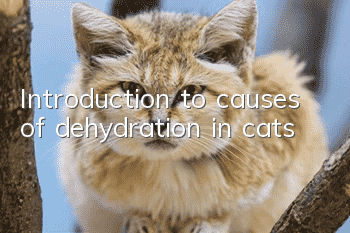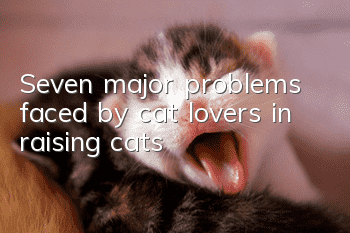Introduction to causes of dehydration in cats

Causes of dehydration in cats:
1. Reduced water intake:
1. The animal consumes less food and water.
2. Animals suffer from systemic diseases, and the appetite and drinking centers are suppressed.
2. Increased body water loss:
1. Polyuria caused by different reasons.
2. Vomiting or diarrhea.
3. Increased breathing or wheezing caused by high fever.
4. Extensive skin damage or burns.
5. Pleural effusion, ascites or fluid accumulation in the gastrointestinal tract.
Methods for rehydrating dehydrated cats:
1. Oral rehydration: suitable for chronically ill animals that are not seriously ill and do not vomit after oral administration. If the sick animals show severe vomiting, diarrhea, and rapid and large loss of body fluids, intravenous infusion should first be used to replenish the cumulative loss, and then oral replenishment of continued loss and maintenance of fluids should be performed. In addition to oral rehydration, oral rehydration can also be given through a nasogastric tube, pharyngeal esophagus, or gastrostomy. Supplementary fluids may also contain nutrients or hypertonic fluids.
2. Subcutaneous rehydration: Suitable for dogs and cats that are mildly dehydrated or do not like to eat. You can choose to rehydrate in areas with loose skin on the neck or back. The supplement is isotonic or slightly hypotonic liquid, but the isotonic 5% glucose solution cannot be injected subcutaneously. Each point can inject 30 to 50 mL of liquid.
3. Intravenous rehydration: suitable for sick animals with severe dehydration or vomiting. Intravenous infusion can control the input speed, quickly replenish large amounts, and easily and accurately replenish the required amount of fluid. Isotonic, hypertonic, hypotonic or irritating liquids (such as calcium chloride solution) can be injected intravenously. The injection site can be the jugular vein, the brachiocephalic vein of the forelimb, the saphenous vein of the hindlimb or the femoral vein.
4. Intraperitoneal rehydration: suitable for rewarming severely dehydrated puppies and cats, and animals with hypothermia. Isotonic or slightly hypotonic fluids can be used for intraperitoneal rehydration, which must be warmed to body temperature before infusion. Because it easily causes peritonitis, it is rarely used clinically.
5. Intra-marrow rehydration: suitable for severely dehydrated kittens or small animals. At this time, the infusion blood vessels are deflated and intravenous infusion is difficult. Except for highly irritating liquids (such as calcium chloride solution), all liquids that can be injected intravenously, including blood, can be injected through the bone marrow. The input site can be the bone marrow of the femur, tibia or humerus.
6. Rectal infusion: Because the large and small intestines of dogs and cats are short, liquids and nutrients can be instilled through the rectum. The method is to raise the hindquarters and pour water and nutrients into the large and small intestines to facilitate absorption.
- How to prevent hairball disease in cats? A must-read for cat owners!
- How to make cats exercise? Is there any good way?
- What’s wrong with the cat that keeps meowing so early in the morning?
- What should I do if my cat has a bad gastrointestinal condition? Don’t change food frequently
- Is it normal for a cat to poop once a day?
- Can the cat find the litter box if it is moved?
- What are the characteristics of a female cat in heat?
- How do you know if your cat has been vaccinated?
- Why does cat moss spread the more it is applied?
- What to do if a Balinese cat is dehydrated



